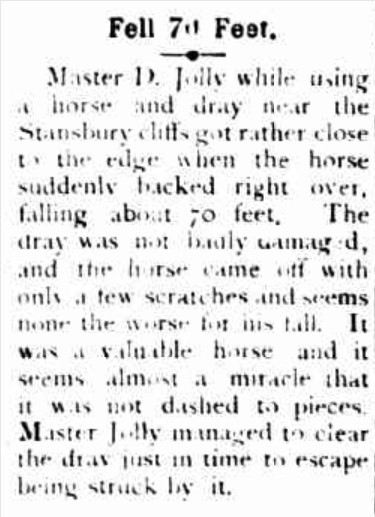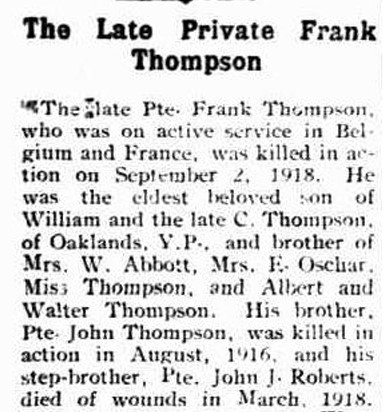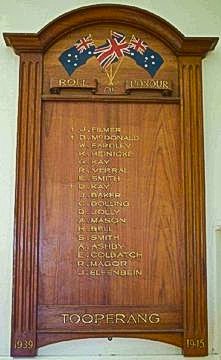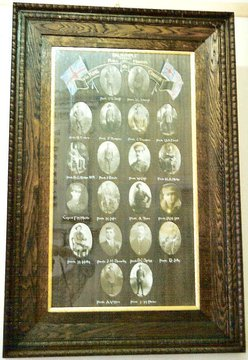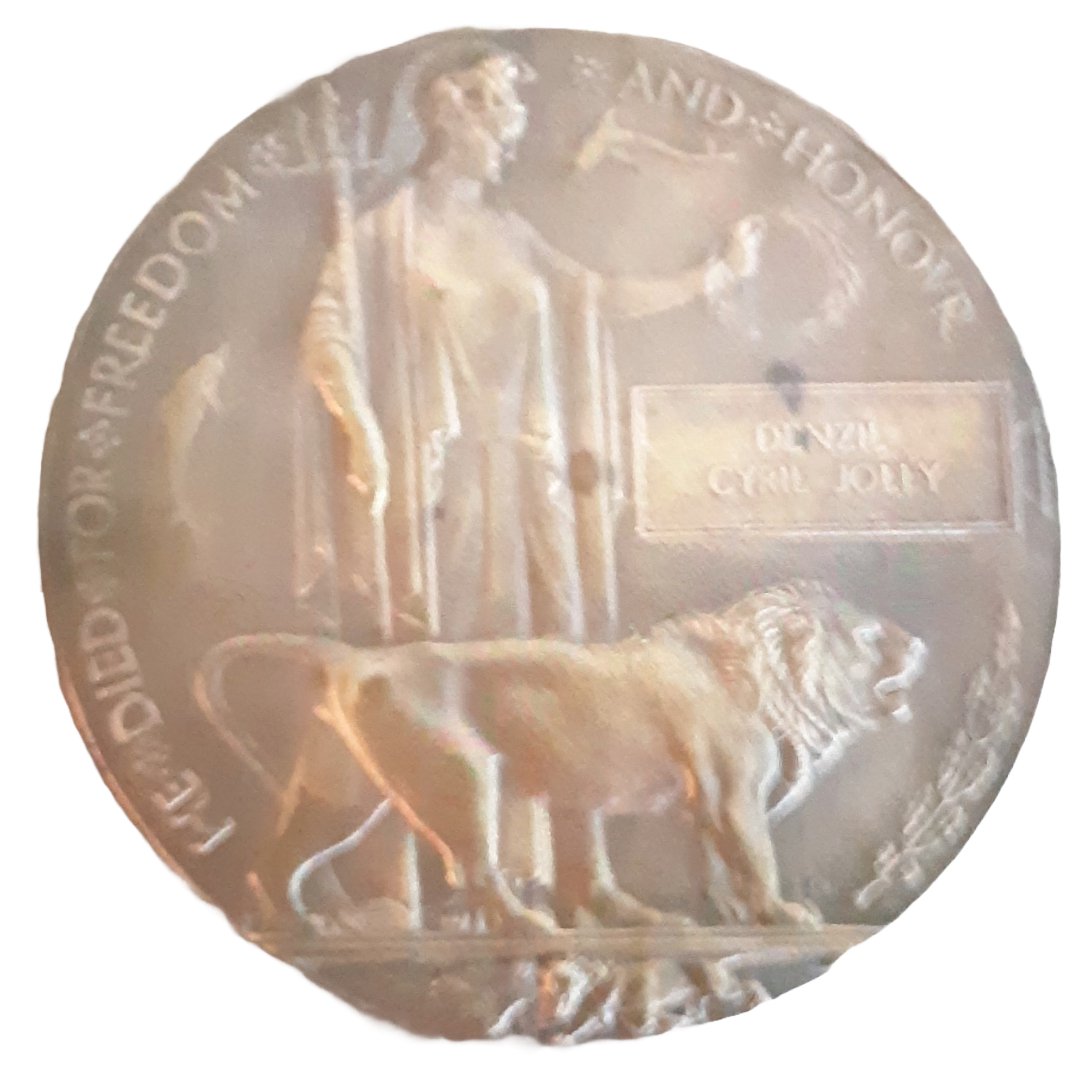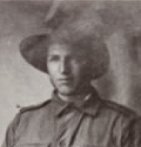
Private Denzil Cyril JOLLY
Eyes blue, Hair light brown, Complexion fair
Yorke Peninsula Lads Off to War – The Jolly Brothers
Can you help locate Denzil?
Denzil Jolly was last seen on the 20th July 1916. As part of the 32nd Battalion, he was positioned near where the Germans collected soldiers who were later buried at Pheasant Wood. There is a chance he might be identified, but we need help. We are still searching for suitable family DNA donors from both parents’ sides of the family – 2 of each.
In 2008 a mass grave was found at Fromelles, a grave dug by the Germans for 250 (Australian) bodies that they recovered shortly after the battle. 180 (2024) of these soldiers have been identified and given proper burials and recognition through finding family DNA donors. 70 soldiers remain unknown and some identifications are highly likely. We just need to find DNA donors.
If you know anything of Denzil’s contacts here in Australia, we would love to hear from you. We would also like to hear from any family connection who would like to contribute to this story.
See the DNA box at the end of Denzil’s story for what we do know about his family.
The Jolly Brothers From Yorke Peninsula South Australia
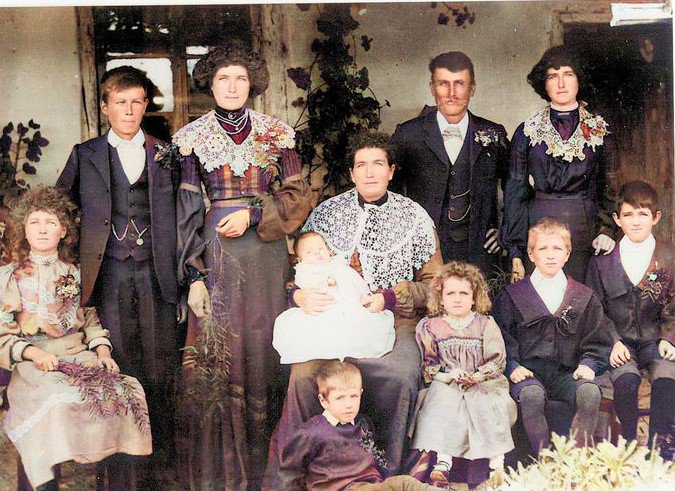
Denzil “Dan” Jolly was born in April 1896 in Warooka, the 6th child of Charles Jolly and Ellen Hucks. Charles and Ellen resided in the Yorketown area of Yorke Peninsula throughout their life, retiring in 1910 to nearby Oaklands where Charles died in November 1915, not long after Dan enlisted. Ellen was an avid knitter and contributed to many patriotic causes. They had eleven known children including Dan’s older brother Robert “Bob” who was born in 1894 and also served in the AIF.
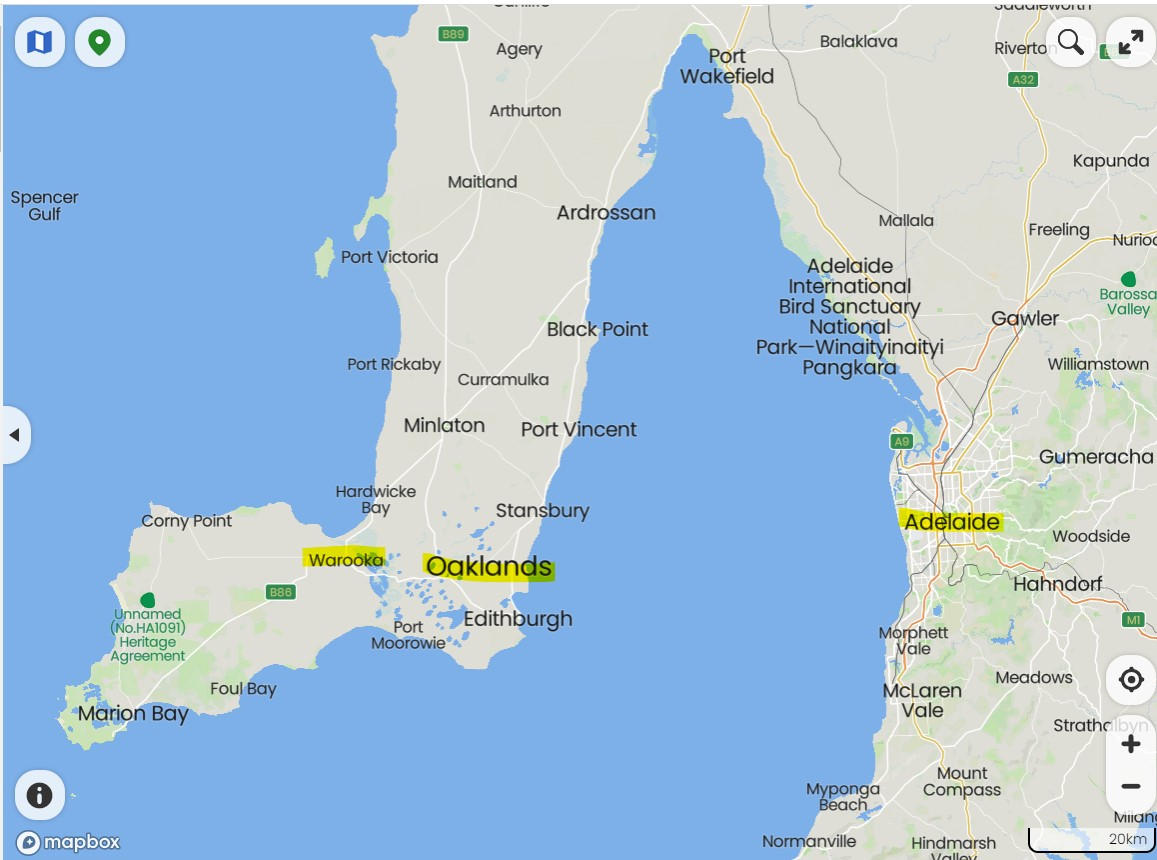
Dan attended the Warooka public school and, on their enlistment papers, Dan and Bob’s occupations were both listed as labourers. It is likely that they worked on their father’s or nearby farms.
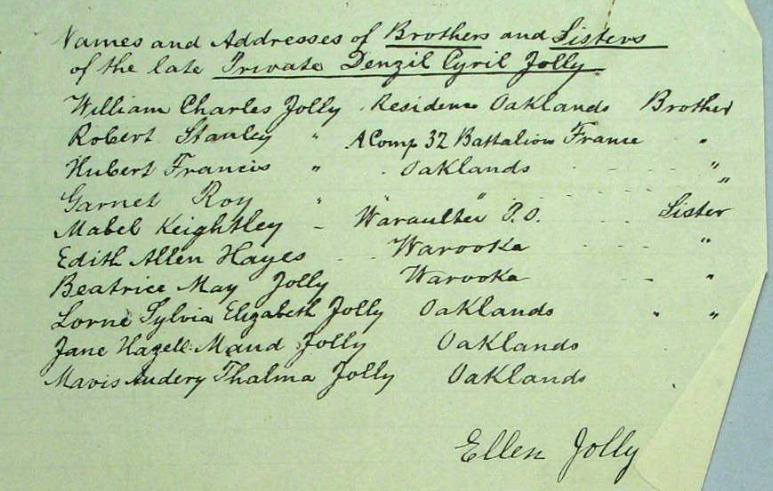
Yorke Peninsula Lads Off to War
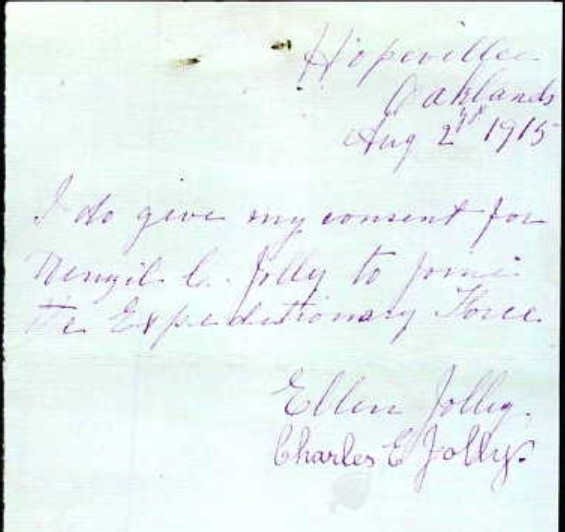
Dan enlisted on 9 August 1915 alongside his friend John “Jack” Thompson, 25. It is likely that they grew up together as both families lived in Oaklands, a very small township. In November 1915, a farewell was held at Wool Bay for the two young recruits who were due to embark for overseas service – Jack in December 1915 with the 10th Battalion and Dan in January 1916 with the 27th Battalion.
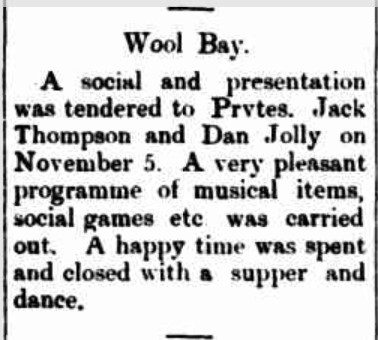
Tragically, Jack was killed in action on 23 August 1916 as part of the 10th Battalion. Jack’s brother Frank would also lose his life in September 1918 in Belgium as would their step-brother, John Roberts, who was also killed in action in 1918. A dreadful toll for a small community
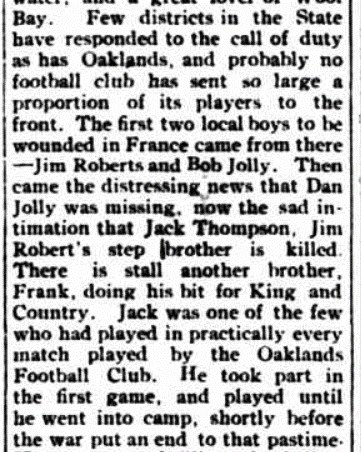
As part of the 27th Battalion, Dan began his routine training (field patrols, bayonet fighting, bomb throwing and trench digging) in the Mitcham Camp which, by 1916
“resembled a large mining town with rows of neat galvanised iron huts, a hospital, camp HQ, a large recreation building run by the YMCA, a Post Office, bank agency, barbers, and religious facilities for many denominations.”
On 12 January 1916, Dan Jolly, aged 18, embarked from Adelaide, South Australia, on board HMAT A7 Medic. He was later taken on strength with the 32nd Battalion on Duntroon Plateau in Egypt on 6 April 1916.
Dan’s older brother, Bob, enlisted 5 days prior to Dan’s departure. He too was assigned to the 32nd Battalion and he left for Egypt on 25 March 1916.
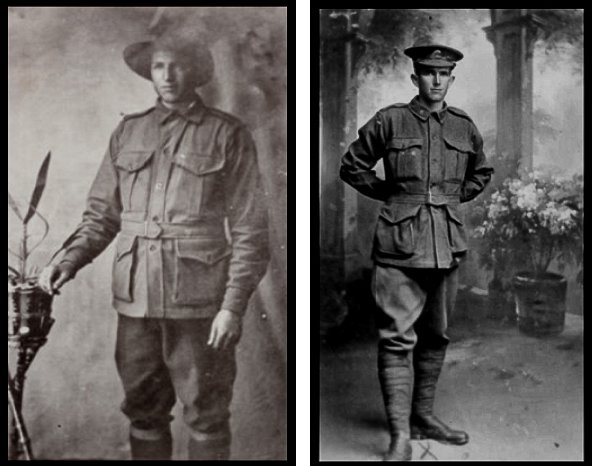
Battle of Fromelles
The 32nd Battalion was destined to be a key part of the battle and the Jolly brothers both seemed likely to be active participants. However, on 27 June 1916, Bob was admitted to hospital with pneumonia and so missed the fateful battle. He spent most of 1916 and early 1917 in England recuperating before re-joining the 32nd in 1917 in France.
On 14th July 1916, the 32nd Battalion moved to billets at Fleurbaix in preparation for an assault on the German lines. The British High Command formulated a plan with the intention of attacking the German lines at Fromelles, anticipating that this attack would draw German troops away from the Somme offensive. Part of the plan was directed at a well defended position known as the Sugar Loaf salient. This position encroached into no man’s land putting the German defenders in an advantageous position to cover no man’s land if an assault took place.
The plan was to use the Australian 5th Division (which included 15th, 14th and 8th Brigades) along with the British 61st Division. The 31st and 32nd Battalions, as part of the 8th Brigade, participated in the attack on the extreme left flank of the assault. They had to cover about 100 metres across no man’s land to reach the German trenches. A seven-hour artillery bombardment preceded the attack which was set to begin at 6pm on 19 July 1916.
The 32nd Battalion and 31st Battalion were to form the first and second waves of the attack and were in position in the trenches. Even before the attack commenced, the Australians had suffered severe casualties from the German artillery and also from the inexperienced Australian artillery who lacked the skill to provide cover for the battalions.
With the commencement of the attack, the flank of the 8th Brigade came under further artillery bombardment causing additional casualties and forcing the third and fourth waves of the attack to be combined. This reduced the strength of the Australian attack who, by now, were suffering heavily from the German machine gunners who had recovered from the preliminary artillery bombardment. With continued enfilading German machine gun fire into the Australians, the 32nd and 31st Battalions were able to capture a small section of the German trenches. However, with no follow up support and continued German counter attacks, the Australians were forced to withdraw leaving many of their casualties in the German trenches.
By the morning of 20 July 1916, the attack was over and the Australians had suffered more than 5,000 casualties. For the 32nd Battalion, the diary entry for July 1916 read, “Officers; killed 4, wounded 8, missing 4. Ordinary ranks; killed 67, wounded 367, missing 214.” [[Source: AWM, 32nd Battalion War Unit Diaries, July 1916]]
Dan’s fate
Private Denzil C. Jolly was among those hundreds of casualties. He was posted as missing on 20 July 1916 and his Red Cross file has just one brief note that confirmed the outcome of the court of enquiry:
Killed in Action 20.7.16 – Previously reported Missing. Cert, by A.I.F. Headquarters dated 7.9.17.
His files contain no other information about his fate as it seems there were no eyewitness reports relating to Dan. It is likely however that Bob, despite undergoing treatment in England at the time of the battle, did his best to discover any possible news of the battle from mates and any news of his younger brother to send home to his family.
Dan’s AIF file indicates that it was late August 1916 before his widowed mother was officially informed as next of kin that he was missing and more than a year later in September 1917 before notification confirmed that he was killed in action. This official step enabled his mother to finalise his estate – intestate as he left no will. His estate principally consisted of his deferred pay and her entitlement to a pension (£2 per fortnight).
In September 1921, his mother replied to Base Records (copy below) saying ‘that I have not received any word respecting the place where my son fell’ other than the two official cables but that she did receive some information from a returned soldier. Not knowing how her son died and that he lay in an unknown grave “somewhere in France” cannot have been easy.
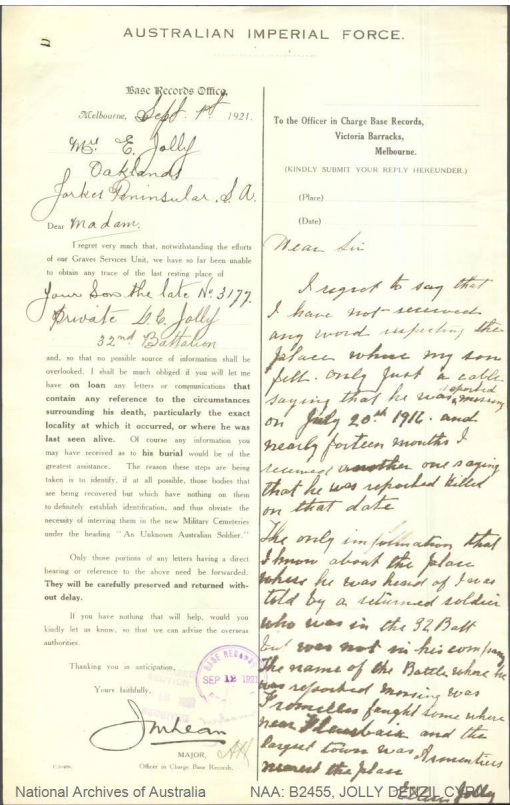
Dan’s older brother, Bob, was eventually discharged medically unfit in 1918 after developing pleurisy. He returned to Australia on 12 May 1918 and later married and raised a family. He was welcomed home together with Wesley Choat also of the 32nd Battalion. Wesley had been wounded in action and taken prisoner at Fromelles and lost two brothers Raymond and Archibald .
On Friday, July 12 a welcome social was accorded to Ptes. Wesley Choate and R. Jolly, both of whom have recently returned from the front Mr. C. Bull occupied the Chair and spoke in eulogistic terms of the guests. Messrs. A. J. Daniell, S. Solly, C. Farrow, and P. Daniell also spoke, when the audience showed their appreciation by striking up with "For they are jolly good fellows." Both soldiers made suitable responding speeches and thanked the speakers for the kind things said about them, and also thanked all those present for treating them so well on their return. Musical items were given by Oaklands and Wool Bay school children, and Misses E. Farrow and A. Macdonald. Games were much enjoyed by the young people. Supper, which had been prepared by the ladies, was served, and the singing of "Auld Lang Syne" and the National Anthem brought a pleasant evening to a close.
While he has no known grave, Denzil is remembered and commemorated at:
- VC Corner Cemetery and Memorial, Fromelles, France
- Australian War Memorial Roll of Honour, Canberra, ACT
- Adelaide National War Memorial, Adelaide, SA
- Stansbury Dalrymple District Roll of Honor, Stansbury, SA
- Stansbury Dalrymple District WW1 Pictorial Roll of Honour, Stansbury, SA
- Stansbury Memorial Institute Roll of Honour, Stansbury, SA
- Stansbury War Memorial, Stansbury, SA
- Tooperang Roll of Honour, Tooperang, SA
- Yorketown War Memorial, Yorketown, SA
- Yorketown and District of Melville Roll of Honour, Yorketown, SA
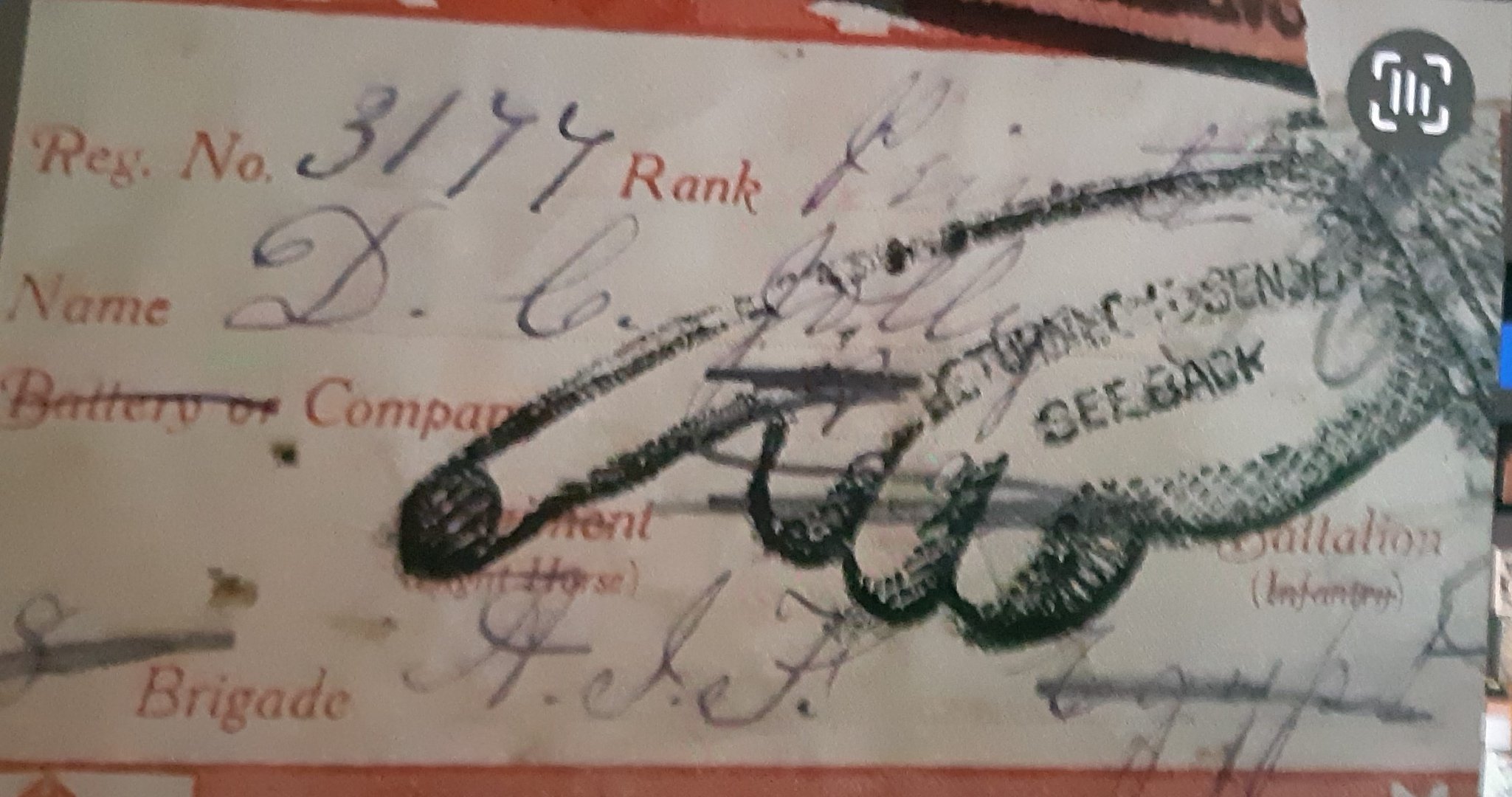
Help us identify Denzil
With no burial details and no personal effects, there is no true closure. But is there still a chance?
As described at the beginning of this story, it is possible that Denzil is one of the yet to be identified soldiers from the mass grave that was dug by the Germans.
We just need to find DNA donors from both male and female lines to test for a match.
If you know anything of Denzil’s family or his friends’ contacts we would like to hear from you.
DNA is still being sought for family connections to:
| Soldier | Denzil Cyril JOLLY 1896-1916 Warooka, SA |
| Parents | Charles Ebenthair JOLLY 1857-1915 and Ellen HUCKS 1863-1944, Yorke Peninsula, SA |
| Grandparents | |||
| Paternal | Charles JOLLY 1822-1916 and Jane JOLLY 1828-64, Yorke Peninsula, SA | ||
| Maternal | William HUCKS 1831-64 and Jane WILLIS 1837-83, Yorke Peninsula, SA |
Links to Official Records
Seeking DNA Donors

Contacts
(Contact: carla@fromelles.info or geoffrey@fromelles.info).
(Contact: army.uwc@defence.gov.au or phone 1800 019 090).
Donations
If you are able, please contribute to the upkeep of this resource.
(Contact: bill@fromelles.info ).
